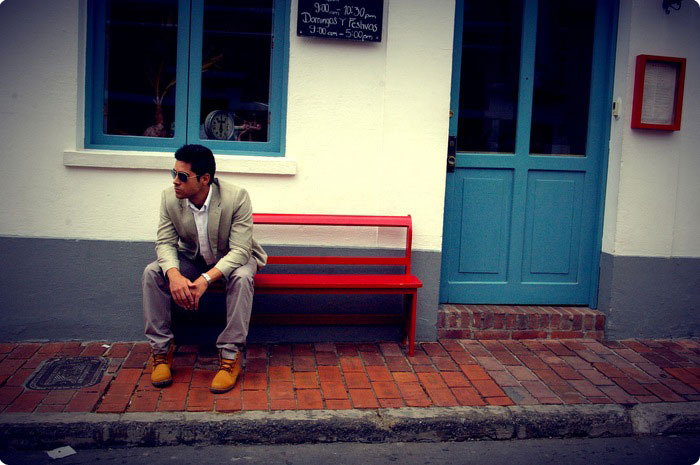 Mamahuhu Colombia is a fashion company producing high quality leather shoes and bags, working directly with the artisans in Colombia. From their start in 2010, they fell in love with the Colombian fashion scene. They found that it allowed a rare opportunity to exercise complete control over the entire process – from design to material selection to production. This enables them to ensure a superior quality and offer limited or unique products based on customer feedback.
Mamahuhu Colombia is a fashion company producing high quality leather shoes and bags, working directly with the artisans in Colombia. From their start in 2010, they fell in love with the Colombian fashion scene. They found that it allowed a rare opportunity to exercise complete control over the entire process – from design to material selection to production. This enables them to ensure a superior quality and offer limited or unique products based on customer feedback.
Luis Moreno, co-founder of Mamahuhu, moved to China in 2009 to study the language and pursue his MBA. While in China, he realized how poorly controlled the quality, materials and work conditions in the fashion industry. This realization gave him the drive to start a company where the important thing is the quality of the products, the authenticity of the materials and the work of the artisans.
I asked Luis to share with our Under30 community the five most important lessons his team has learned from running two successful Kickstarter campaigns.
1 – It’s all about how you tell the story
In Kickstarter is not just about the product, but also about the story behind it. The Kickstarter community is very aware of current worldwide issues and any project that can tackle some of those problems is always much better received (let say social purpose, bringing production back from China, green/eco friendly projects, etc) than projects without such consciousness. Having just a product probably won’t work, founders need to be on the video and speak personally about the WHY, HOW and WHAT. People want to know the whole story behind the project. Backers will appreciate updates and comments on how the project is progressing. Moreover, if a project seems dead, even backers that already pledged might go away fearing that the team is not committed enough.
Mamahuhu’s team was personally in the video and explained the concept, the project and their needs. They also showed the whole process of making one shoe, from the leather to mounting the shoe-tree. They made it personal and let their passion speak for itself.
Here’s the link to Mamahuhu’s Kickstarter campaign.
2 – Reach out to your family and friends first
During the first week or two, it is essential to reach as many family and friends as you can, so you rise up the pledge numbers and manage to enter in the Popular Section. Otherwise, the general public won’t see you at all. If no one sees your project, it won’t get very far. Once in Popular, you will see how the backers come quickly if the project is good enough. The community is extremely active when they like something. In the third day of campaign, Mamahuhu’s had over 35 backers from friends and family, putting them on Popular during 3 days, which in turn allowed them to reach 30% of their goal by day 5.
3 – Be realistic with delivery time
The main problem that plagues very successful projects is to delay deliverables. It is fundamental to make the right numbers and to be realistic on how many units you can deliver by a certain date. Limiting the numbers of pledges per item might be wise if your products are handmade or just take time to produce them. Your backers will understand if you need 3 months to prepare your awesome products, but will kill your project if you delay and delay from the date you promised.
Mamahuhu wanted to be realistic in their first campaign and allowed 2 months to produce and deliver the products, which in fact turned out not to be enough time for some of the items. In their second campaign, they estimated 3 months to deliver the rewards. From their experience, they have seen projects that promised rewards in one month, and six months later they haven’t even finished production. Even if the product is amazing, most backers are turned off by this failure to deliver.
4 – Don’t go too high on the final goal
Given that Kickstarter is a platform of all or nothing, setting a very high goal might be dangerous. It is always recommended to set up a more humble goal. As they say, it’s better to under promise and over deliver.
Mamahuhu’s first project aimed to $15,000, which made them feel the pressure until the last week. If they had chosen $30,00-50,000 like many projects on fashion do, it would probably have meant that their brand wouldn’t be a reality today. The lesson here is that it’s better to be able to initiate the project with a reasonable budget than lose the opportunity of even starting because of .
5 – Don’t Panic
Last week in a campaign is the most important one. Those final 7 seven days is when the project really fires up and will make the whole difference to the goal reached. Having one or two slow weeks in the middle of a project is somewhat normal. Still, it is said that by the first 10 days you should be able to raise at least 35%. A good approach for that is to offer an “early birds” tier, so the first 30-40 backers come quickly because of the limited bargain.
Cesar Romero is Community Manager at Under30CEO. He is also CSO for Moomkin and writer for Cesar’s Journey. Native Nicaraguan in love with running, dancing, and living life in Permanent Beta. Follow him @romero866 for some inspiration and thinking outside the box.




